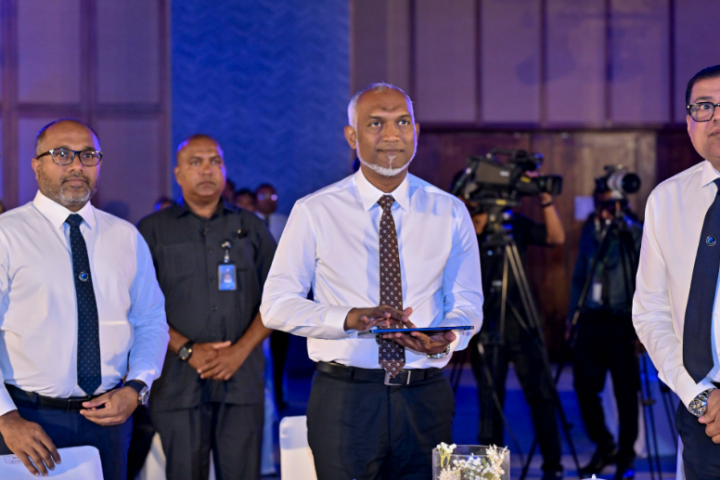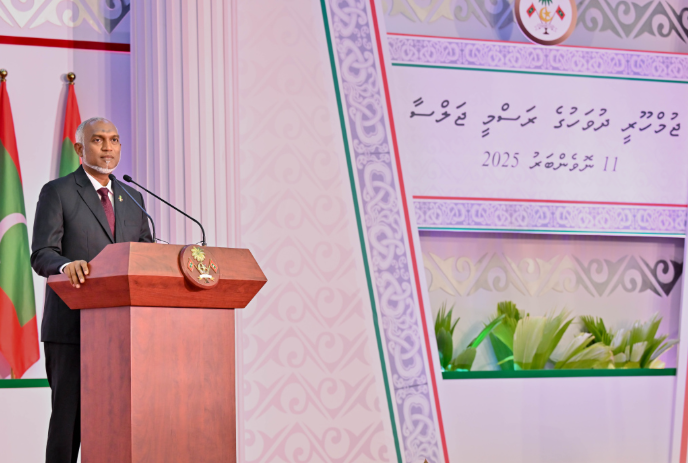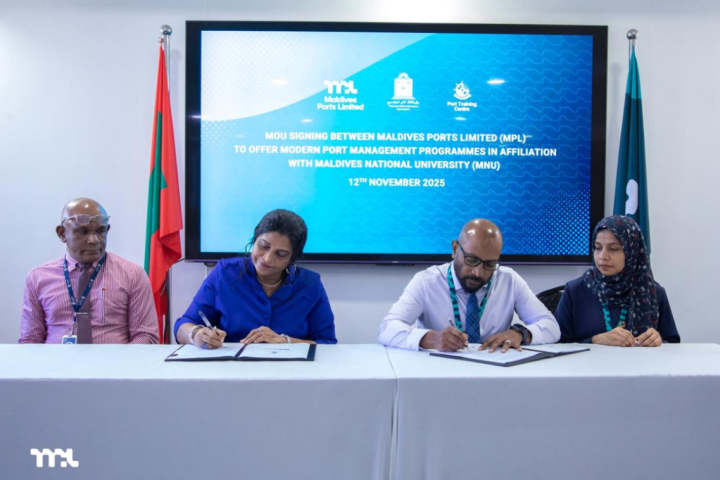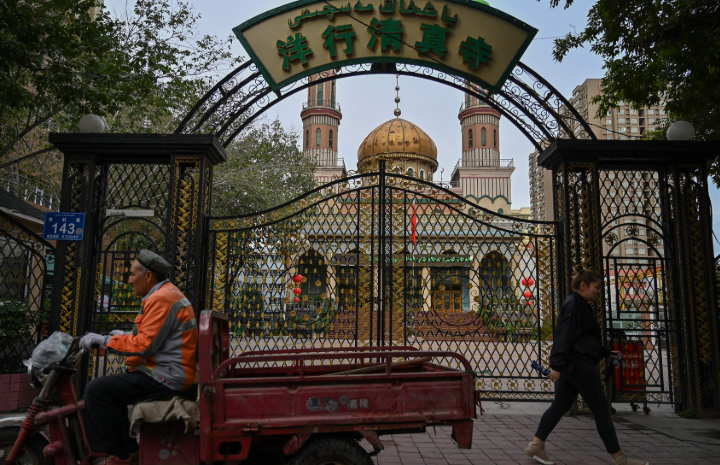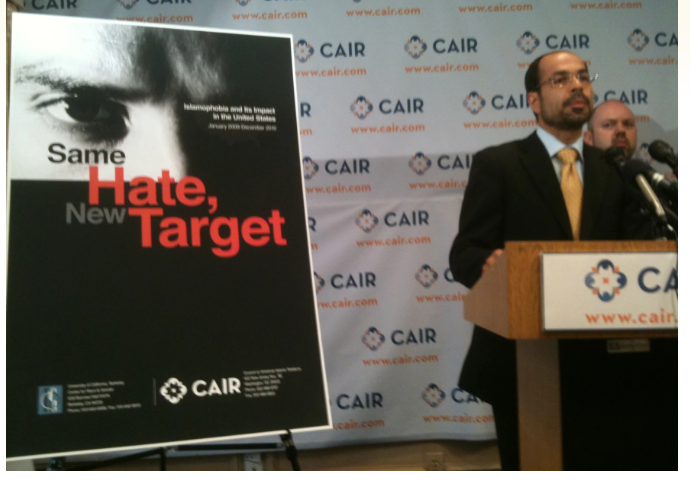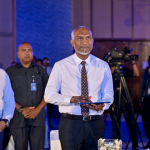MALE’, Maldives — On this year’s World Press Freedom Day, President Dr. Mohammed Muizzu struck a thoughtful tone, affirming his government’s commitment to a free and responsible press. “Here in the Maldives, we remain resolute to guarantee free, independent, and responsible media,” he said in a statement shared on social media, calling for the ethical use of artificial intelligence and praising journalists for their role in safeguarding democratic values.
His remarks come at a time when the Maldives is earning praise as a bright spot in South Asia’s often precarious media landscape. According to the 2025 World Press Freedom Index released by Reporters Without Borders (RSF), the island nation ranks 104 out of 180 countries, with a score of 52.46 — placing it above most of its South Asian neighbors and solidifying its position as a regional outlier for press independence.
For a president who took office amid deep political polarization, President Muizzu’s media record has been largely consistent. While early missteps and heavy-handed rhetoric cast temporary shadows, his administration has so far upheld the country’s tradition of a vibrant press. Media outlets in Male’ continue to operate with a degree of openness rare in the region — covering everything from corruption to street protests without the kind of sustained state retaliation seen elsewhere in South Asia.
Even when faced with personal attacks and unfounded claims, President Muizzu has maintained a hands-off approach. Demonstrations — whether in support of detained officials, taxi driver grievances, or justice for victims against high-profile individuals — have become a regular feature of Male’s compact urban life. Most protests, often orchestrated by opposition, proceed without disruption to the public or interference by the state.
But there was one night that tested this narrative. On the second night of March, a spontaneous youth-led demonstration turned tense. What began with Gen Z youths taking to the streets — playing carom, setting up a table tennis game, and calling for justice for Yumnu — ended with a brutal police crackdown. The excessive force used to disperse the crowd, many of whom were teenagers, shocked the public and was swiftly condemned by politicians across the spectrum. The crackdown, rare in recent memory, bruised the image of a government otherwise known for media tolerance and democratic poise.
That incident remains an anomaly in a country where journalists, while not entirely free from economic and political pressures, generally enjoy more space than their regional peers.
“We’re better off than most in the region, but it’s not perfect,” said a journalist at a local news outlet, who requested partial anonymity for safety. “You feel the weight of who’s paying the bills sometimes.”
Across the rest of South Asia, the RSF index paints a far bleaker picture — a region mired in ownership concentration, legal harassment, and outright violence against the press.
India: A Media Giant Under Pressure
India, ranked 151 with a score of 32.96, has a paradoxical press environment. It boasts one of the largest and most diverse media landscapes in the world, yet freedom of expression is increasingly constrained. RSF points to media consolidation under business moguls allied with political power, and to the growing threat of legal intimidation, particularly defamation and sedition laws. Despite a modest improvement from 2024, journalists report a constant climate of fear, according to the report.
India’s economic rise is undeniable, but the context score reveals how financial pressures continue to erode editorial independence.
Pakistan: A Dangerous Beat
Pakistan’s media environment continues to deteriorate. Ranked 158 with a score of 29.62 — six spots lower than last year — journalists face escalating threats. Online harassment, surveillance, and violent attacks remain common. In cities like Karachi and Islamabad, journalists must navigate pressure from intelligence agencies, political factions, and extremist groups.
The reliance of news outlets on government advertising further fuels self-censorship, creating a cycle of silence in the face of danger.
Bangladesh: A Surprising Climb
Bangladesh, which rose 16 spots to rank 149 (score 33.71), shows signs of a positive shift. Fewer violent incidents and a slight easing of legal pressures have led to cautious optimism. Still, most media outlets remain tied to political patrons, and government influence through advertising remains strong. While the country’s trajectory is upward, RSF warns that institutional changes will be needed to sustain the gains.
The Broader Region: A Patchwork of Progress and Peril
Nepal, leading South Asia at rank 90 (score 55.2), offers relative freedom, though political interference is never far away. Sri Lanka, now ranked 139 (score 39.93), improved by 11 spots — a tentative rebound following years of instability. Bhutan, on the other hand, slipped to 152 (score 32.62), citing economic constraints and growing silence in the press. Afghanistan remains near the bottom at 175, where press freedom has all but vanished under Taliban rule.
Throughout South Asia, a common thread binds press systems together: financial insecurity and political pressure. From Kathmandu to Karachi, from Colombo to Dhaka, journalists walk a delicate line between informing the public and preserving their safety.
In this landscape, the Maldives stands out — not for being perfect, but for being promising. President Muizzu’s administration has demonstrated that press freedom can coexist with political resilience, even amid criticism. His response to World Press Freedom Day was not merely ceremonial but reinforced the country’s role as a regional model — if an imperfect one.


